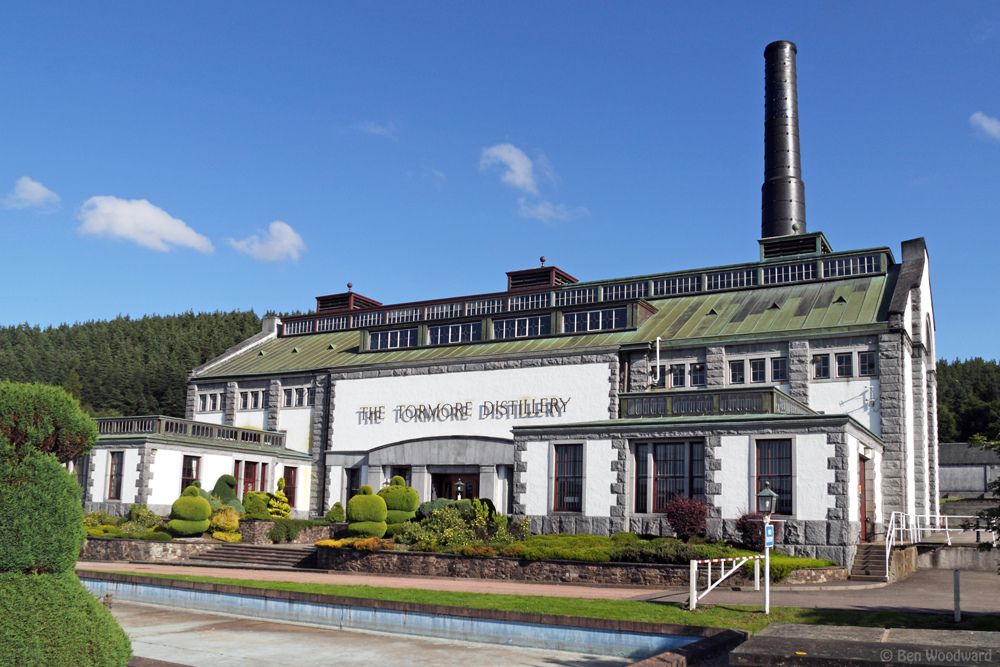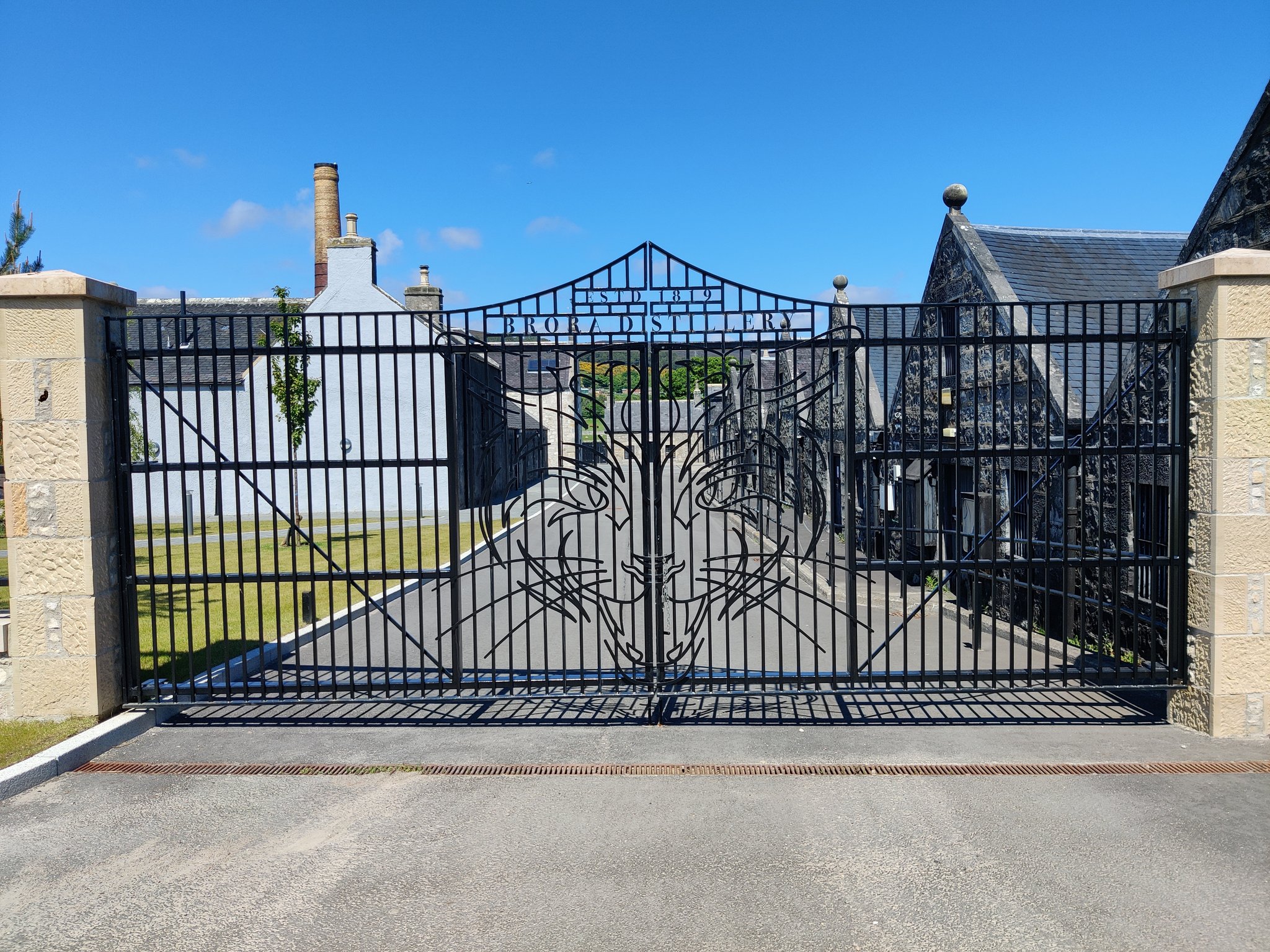Reflecting on my initial discussion of Mortlach from three years prior (time flies!), I recall mentioning the need to delve into their 2.81 distillation process, potentially following an overview of distillation itself. It seems that slipped my mind! Nevertheless, I’ll share some insights into their distillation method shortly. Meanwhile, let’s juxtapose two iterations of Mortlach’s 15-year-old, bottled by Gordon & Macphail: a vintage edition from the 1970s and a more recent release from 2015.
Mortlach’s 2.81 Distillation
In 1896, a novel approach to whisky production was conceived by Alexander Cowie, with input from Charles Doig, the mind behind the innovative Doig Ventilator. This architectural marvel, resembling a pagoda and functioning as a kiln vent, revolutionised the malting process for Mortlach and other whisky makers by drawing in air from every direction.
The intricate 2.81 distillation technique is a cornerstone of Mortlach’s identity, crafting a whisky that is hearty, robust and savoury. The entire process, from a relatively brief fermentation of 53 to 58 hours to the final stages in the still house, is fine-tuned to achieve this distinctive character. Mortlach is also one of only a handful of distilleries, merely fourteen in Scotland, to employ worm tub condensers in their production.
Mortlach’s distillery houses six stills – half for washing and half for distilling. Unlike most distilleries, Mortlach’s stills vary in shape and size and operate independently rather than in matched pairs. This setup allows for the creation of three separate spirit profiles from the spirit stills, which are then blended to form Mortlach’s signature whisky.
The process begins with the combination of wash still #3 and spirit still #3, which produces a malty distillate. In an atypical move, wash stills #1 and #2 function together. The distillation is divided into two segments: the ‘heads’ and the ‘tails’. The initial segment from wash stills #1 and #2, known as the low wines, is lighter and is processed through spirit still #2, yielding a delicate and floral spirit.
The denser segment from wash stills #1 and #2 undergoes a single pass through spirit still #2 without any cuts, enhancing its richness and viscosity. This segment is then redistilled with the ‘tails’ from the same wash stills, further intensifying its robustness.
Spirit still #1, being smaller and filled to a higher level, has increased contact with the copper, but is not cleansed in the same manner due to the absence of cuts. The distillate that has been through two rounds is subjected to a third distillation, this time with the ‘heads’ from wash stills #1 and #2, which by then have become exceedingly thick. At this stage, a spirit cut is made.
This cut is extracted from spirit still #1 every third distillation. Mortlach’s use of worm tub condensers, coupled with the chilling effect of 10-degree water, ensures that the vapour swiftly condenses back into liquid upon contact with the copper. This phenomenon is crucial to Mortlach’s process, as the copper plays a pivotal role only when the spirit is in liquid form. Every step of production is meticulously calibrated to foster this unique quality, epitomised by the precise 2.81 ratio.
Whilst the number of distillations is closer to three than two, it defies the common association of triple distillation with lighter spirits. Instead, the 2.81 represents the exacting precision (and complexity) of Mortlach’s distillation process.
Mortlach 15-year-old Gordon & Macphail (1970s) Review
As with some other distilleries, for a long time Gordon & Macphail were releasing licensed bottlings of some single malts, including the Mortlach 15-year-old. Details surrounding the Mortlach 15-year-old, released by Gordon & Macphail in the 1970s, remain largely a mystery. The specific casks chosen for aging by Gordon & Macphail were not revealed, though it’s likely that many if not all were sherry casks. Prior to bottling, the whisky’s strength was brought down to 40%. With no availability in primary markets, enthusiasts must turn to auctions and collectors, much like I did when acquiring a 50 ml sample of this Mortlach.

Colour:
Burnished
Nose:
Neat: Scents of citrus, wood polish, and metallic copper, alongside the freshness of orange juice and eucalyptus gum. There’s a hint of mint and an assortment of red fruit aromas, particularly raspberry, complemented by the savoury notes of cured meat and the distinct leather of a horse saddle.
Palate:
Neat: It initially feels somewhat light in texture, though not excessively so compared to contemporary 40% ABV whiskies. With time, it develops a creamier consistency. The flavour profile begins with a balanced sweet and sour impression, followed by notes of oak and a variety of dried fruits such as dates, sultanas, and figs. Dark cherry undertones emerge, along with a subtle blend of spices including a mild pepperiness, coriander, and nutmeg. The palate is rounded off with the presence of almonds and the earthy essence of tobacco leaves.
Finish:
Lasting impression of spices and a subtle woodiness. There’s a hint of rancio and a trace of balsamic vinegar, complemented by the refreshing coolness of eucalyptus and mint. A gentle warmth can be felt in the throat.
Comments:
Excellent! I owned a bottle of the official and recent Mortlach 16-year-old, and it seemed quite modern and engineered, in contrast to the Gordon & Macphail Mortlach 15-year-old, which exudes richness, depth, and intricacy. One can discern the traditional craftsmanship and the mature sherry nuances in this vintage expression. Excellent whisky indeed.
Rating: 7.5/10
Mortlach 15-year-old Gordon & Macphail (2015) Review
This more recent release of Mortlach 15-year-old by Gordon & Macphail, bottled in 2015, underwent maturation in sherry casks before being bottled at a slightly elevated ABV of 43%.

Colour:
Burnished as well, though a tone darker than the 1970s one.
Nose:
Neat: The nose is distinctly different from the 1970s Mortlach, marked by the peels of citrus fruits, with lemon and orange taking centre stage. These are accompanied by the sweet scents of candy reflecting those citrus flavours. There’s an artificial orange fragrance that could be likened to an orange-scented household cleaner or a candy lollipop. Additionally, there’s a presence of lemongrass oil, contributing to an overall ester-like aroma.
Palate:
Neat: This whisky feels lighter and less complex compared to its 1970s counterpart, with a thinner mouthfeel. The flavour profile is dominated by citrus fruit notes, particularly orange peel, and is accented by the sharpness of black pepper and a range of herbal nuances.
Finish:
The palate is carried forward on the finish, with some polished oak and orange flavoured candy.
Comments:
I find myself quite taken aback by this recent Mortlach variant. Barring the possibility that my miniature sample was compromised, it lacks the quintessential Mortlach character. While the taste is passable, the aroma strikes me as somewhat synthetic and chemically tinged with citrus notes, leading me to rate it just below 5.



